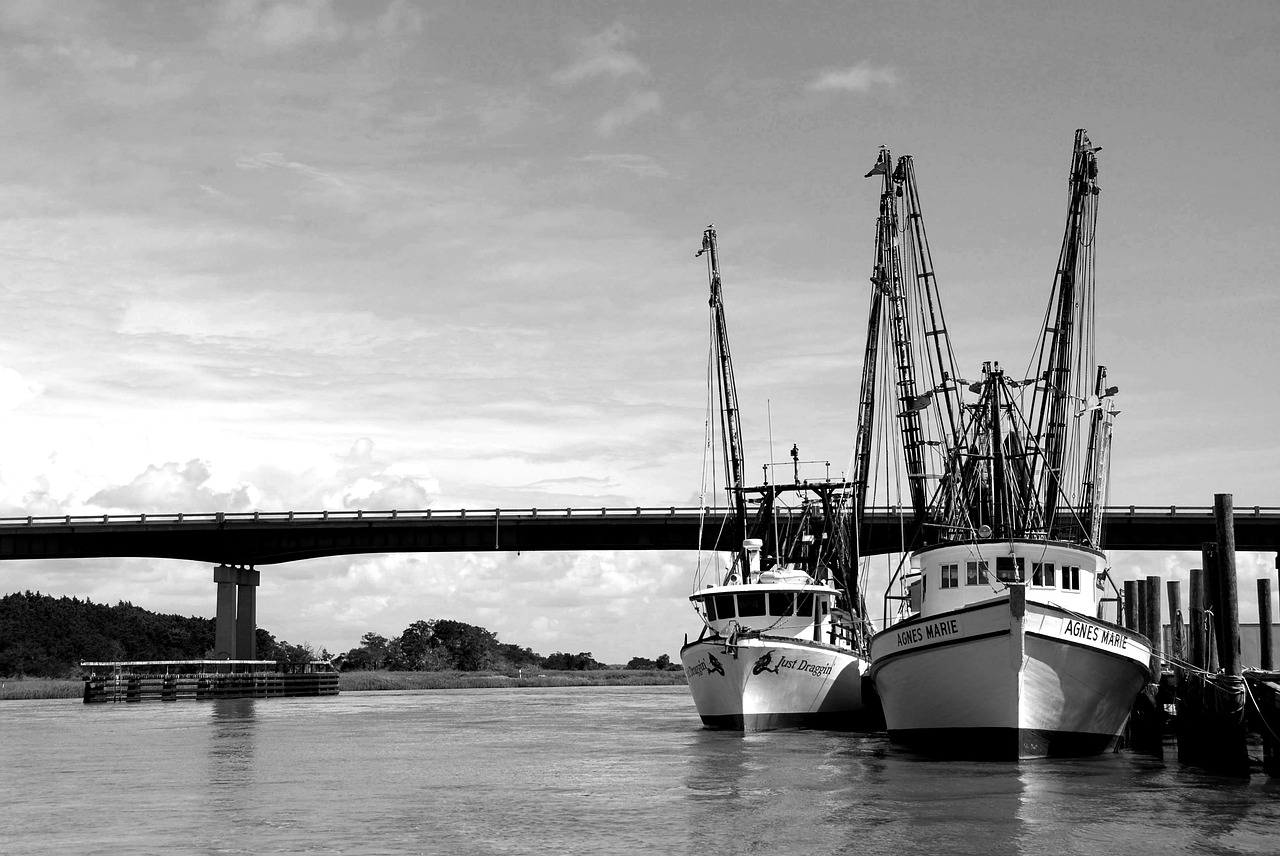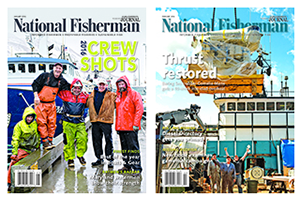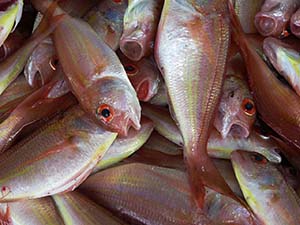About

National Fisherman is the only publication dedicated to the entire U.S. commercial fishing industry. We reach stakeholders from boat to dock and beyond on every coast, in print, online, and in person. From our geographically diverse roots comes a simple mission: Informed Fishermen. Profitable Fisheries. Sustainable Fish.
Who is the National Fisherman audience?
Commercial fishing is not just an industry, it’s a way of life. Fishing communities have a very real pulse, and we strive to deliver material that is as lively as they are. Our staff covers boats, gear, suppliers, news, events, and legislation, but most important are the people who comprise this vibrant industry.
 The National Fisherman audience is primarily domestic and Canadian commercial fishermen, but we also have a sizable audience of academics, politicians, government staff, sport fishermen and environmental advocates. Our coverage appeals to people who are interested and involved in the fishing industry, which includes catching fish but encompasses many other tasks, jobs and responsibilities. We speak to the people who make a living commercial fishing and those who support them, outfit them, regulate them and follow them.
The National Fisherman audience is primarily domestic and Canadian commercial fishermen, but we also have a sizable audience of academics, politicians, government staff, sport fishermen and environmental advocates. Our coverage appeals to people who are interested and involved in the fishing industry, which includes catching fish but encompasses many other tasks, jobs and responsibilities. We speak to the people who make a living commercial fishing and those who support them, outfit them, regulate them and follow them.
What is the National Fisherman brand?
What started as a column in a local Maine weekly paper 100 years ago is now part of a suite of products that reach tens of thousands of stakeholders across the country and beyond. That reach includes the monthly National Fisherman magazine, a Seattle-based trade show and conference called Pacific Marine Expo, the annual journal Pilothouse Guide, Nationalfisherman.com, our Fish eNews newsletter, and our various social media platforms.
What is National Fisherman’s history and reach in the industry?
The magazine began as Maine Coast Fisherman the weekly newspaper column and was first published as a standalone monthly in 1946. In 1960 it combined with a New Hampshire publication bearing our current name: National Fisherman. In 1966, it incorporated Pacific Fisherman and Alaska Fisherman’s Journal in 2006. We have carried on the tradition of publishing the annual Pilothouse Guide for our West Coast and Alaska readers.
 Today, we update our website daily with industry news, market updates and boatbuilding launches so our 60,000 monthly visitors can stay up to date. We keep up our social media platforms and our twice-weekly newsletter. And every month our 24,000 readers receive the printed and digital National Fisherman magazine with expanded, in-depth original reporting.
Today, we update our website daily with industry news, market updates and boatbuilding launches so our 60,000 monthly visitors can stay up to date. We keep up our social media platforms and our twice-weekly newsletter. And every month our 24,000 readers receive the printed and digital National Fisherman magazine with expanded, in-depth original reporting.
Every fall we convene with stakeholders from across the country in Seattle for Pacific Marine Expo, a conference and trade show with 500 booths and 5,000 attendees that began more than 50 years ago. The International Workboat Show, Seafood Expo Global, Seafood Expo North American and their respective magazines and digital publications are part of National Fisherman’s extended family under Diversified Communications.
Nationalfisherman.com members get access to a free digital edition of the magazine, our archives going back more than a decade, specialty publications, the digital supplement On Deck, discounts for Pacific Marine Expo, and much more.
What are the top industry issues and trends?
Commercial fishing is a dynamic industry in constant motion. Our readers are always looking for new boats, gear, and the management and legislative updates that help them make business decisions.
 Individual states manage their own inshore fisheries out to three miles from shore.
Individual states manage their own inshore fisheries out to three miles from shore.
At the federal level, fisheries are managed under the Commerce Department’s National Oceanic and Atmospheric Administration. The nation’s chief fisheries administrator is the director of the National Marine Fisheries Service, which is also referred to as NOAA Fisheries.
The Magnuson-Stevens Fishery Conservation and Management Act, first passed in 1976, established a 200-mile exclusive economic zone as the reach of our federal waters (it had been set at 12 miles). That means federal waters extend from the 3-mile state boundary out to the 200-mile national boundary.
The Magnuson-Stevens Act is the primary federal legislation that oversees federal fisheries policy today. It also established the eight regional councils that oversee species-specific fishery management plans.
NMFS tracks 474 stocks and stock complexes through 46 fishery management plans. The number of U.S. fisheries on the overfishing and overfished lists remain near all-time lows.
The term “overfished” does not necessarily indicate excessive fishing pressure on a stock. It means simply that the stock is not healthy enough to support a full-scale commercial fishery. Lagging stock health can result from a variety of factors, including pollution, climatic events and changes in water temperature.
The United States also participates in international fishery management organizations, including the Inter-American Tropical Tuna Commission, the International Commission for the Conservation of Atlantic Tunas, the International Pacific Halibut Commission, and the North Pacific Anadromous Fish Commission.
What is the scale of the commercial fishing industry?
 The commercial fishing industry supports roughly 1.2 million jobs nationwide as of 2016, the most recent year for which we have data. In 2018, commercial fishermen landed 9.4 billion pounds of seafood valued at $5.6 billion, and 77 percent of that was sold as fresh or frozen product, with fishmeal and fish oil making up about 17 percent. Bait, animal food, canned and cured products made up the remaining 6 percent.
The commercial fishing industry supports roughly 1.2 million jobs nationwide as of 2016, the most recent year for which we have data. In 2018, commercial fishermen landed 9.4 billion pounds of seafood valued at $5.6 billion, and 77 percent of that was sold as fresh or frozen product, with fishmeal and fish oil making up about 17 percent. Bait, animal food, canned and cured products made up the remaining 6 percent.
Of the nearly 10 billion pounds landed in 2017, we exported about 3.6 billion pounds and imported about 6 billion pounds. Included in that import figure, however, is raw product exported for processing and re-imported for consumption.
As of 2018, Alaska commercial fisheries accounted for 58 percent of the nation’s total wild-capture seafood landings by volume. The Gulf of Mexico, Atlantic Seaboard and Pacific Coast accounted for 16, 14 and 12 percent. The Alaska Seafood Marketing Institute’s international reach and the state’s constitutionally mandated standards for management and sustainability set the stage for U.S. seafood in the global marketplace.
U.S. seafood products are considered a gold standard for quality.
Top U.S. species
 Our top species by value can be found on every coast, which exemplifies the health of our seafood industry on a national scale:
Our top species by value can be found on every coast, which exemplifies the health of our seafood industry on a national scale:
- American lobster (Northeast)
- Blue crab (Chesapeake and Gulf of Mexico)
- Menhaden (Chesapeake and Gulf of Mexico)
- Pacific halibut (West Coast and Alaska)
- Pacific salmon (West Coast and Alaska)
- Blackcod (West Coast and Alaska)
- Sea scallop (East Coast and Alaska)
- Shrimp (Nationwide, primary landings in the Gulf of Mexico and Oregon)
- Tunas (East Coast, Gulf Coast and West Coast)
- Walleye pollock (Alaska)
Lobster and blue crab are most often sold into live markets, which require the highest quality catch and makes these an inherently high-value fishery. Sea scallops, blackcod, shrimp and tunas are also high-value fisheries, though not typically sold live. Pollock, menhaden and salmon are landed in large volumes, more than making up for lower dock prices.
What boat and gear types does National Fisherman cover?
- Bandit rig
- Catcher processors
- Crab boats
- Divers
- Draggers
- Dredgers
- Gillnetters
- Bowpickers
- Setnetters
- Stern reel
- Groundfish
- Handlining
- Hand-tonging (oysters)
- Harpoon
- Jiggers
- Lobster
- Longliners
- Mariculture tenders
- Multipurpose
- Pound net
- Purse seiners
- Reef fish
- Rod and reel (commercial only)
- Skiffs
- Shrimpers
- Tenders
- Trap/pot
- Trawlers
- Beam
- Bottom
- Midwater
- Otter
- Outrigger
- Pair
- Side
- Stern
- Wetfish
- Trollers
We also cover these topics and gear categories:
- Acoustic equipment
- Air compressors
- Air transport
- Alarms and security
- Anchors
- Antennas
- Aquaculture (specifically bivalve and kelp)
- Automatic pilots
- Bait
- Bearings
- Blocks and pulleys
- Boatbuilding and repairs
- Bow thrusters
- Boat brokers
- Buoys, floats and fenders
- Capstans
- Cargo handling
- Classification services
- Clothing and boots
- Coatings and paints
- Cold chain
- Cold storage
- Communications
- Compasses
- Computers and software
- Containers
- Control systems
- Cooling systems
- Corrosion protection
- Couplings
- Cranes
- Crew life
- Cutting machines
- Deck equipment and hardware
- Doors
- Electric motors
- Electrical equipment
- Electronics
- Engines
- Environmental services
- Exhaust systems
- Fiberglassing
- Filtration and separation
- Financial services
- Firefighting equipment and suppression
- First aid
- Fish-handling equipment
- Fish hooks and systems
- Fish pumps
- Fishery management
- Fishing equipment
- Foulweather gear
- Freight Forwarding
- Fuel and fuel additives
- Galley equipment
- Gauges
- Gears
- Generators
- Gloves
- Grading and sorting
- Grinding and wastewater
- HACCP
- Hardware
- Hatches
- Haulers
- Heat exchangers
- Hoses and fittings
- Hydraulics
- Ice-making equipment
- Impellers
- Infrared systems
- Insulation and soundproofing
- Insurance
- Jet propulsion
- Knives
- Legal services
- Licenses and licensing
- Life rafts
- Lighting
- Lubricants
- Metalwork
- Monitoring
- Mooring
- Naval architecture
- Navigation aids
- Nets and trawls
- Oil spill control
- Oily water separators
- Outboard motors
- Packaging and machinery
- Permits
- Piping
- Pneumatics
- Ports and harbors
- Pots and traps
- Processing equipment and machinery
- Propellers and propulsion
- Pumps
- Raingear
- Refrigeration and freezing
- Rope and twine
- Safety and survival
- Sanitation
- Satellite communications
- Searchlights
- Seating
- Sonar
- Steering systems
- Stern drives
- Storage
- Surveyors
- Tanks
- Training and education
- Transmissions
- Transportation
- Trawl doors
- Turbochargers
- Underwater acoustic equipment
- Valves and fittings
- Ventilation systems
- Vessel management
- Vibration control
- Watermakers
- Weather instruments and forecasting
- Welding
- Winches and windlasses
- Windows
- Windshield wipers and blades
- Wire ropes
Want more?
Advertising in National Fisherman will give your brand national exposure to establish and nurture new customers in every corner of the country. Learn more about our advertising rates and options.
Our twice-weekly newsletter delivers the latest industry insights, trends and news directly to more than 16,000 subscribers. Subscribe to our twice weekly newsletter, Fish eNews
For any other questions please reach out to our team.



